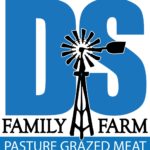Worried about what you are "really" eating? Have peace of mind with pasture grazed meats.
Pesky Bugs on the Inside
We are not talking about that fly in your house! What about those bugs that live inside our cattle?
Prior to becoming Animal Welfare Approved, we didn’t think much about the bugs inside our cows. We had heard about using a microscope to check for “worm eggs” in cow manure but as much as Doug likes looking at cow pies, this seemed a little bit odd. Actually, we just didn’t know how to go about it. Annual testing for internal parasites is a requirement of the Animal Welfare Approved process.

During our first Animal Welfare certification process, the inspector told us to just take a manure sample to a veterinarian. How simple! Fifteen dollars later we had a worm egg count. With our animals on pasture all the time, we figured we were good. The June 2016 report actually told us that at our egg count number of 1200 per gram was bad, we were losing production!
A toxic wormer was not an option for our herd. Doug reviewed notes from previous training. The solution we used this past year was a non toxic supplementation approach:
- Apple Cider Vinegar
- Diatomaceous Earth
- Salt
We created a mix of equal parts of the above three items and fed it to the herd in a tub. In addition, during the fall and early spring we added Cina homeopathic remedy to their water.
Results
The June 2017 egg count report came back at 200 eggs per gram. The veterinarian told us to keep doing what we were doing as this is a very good – low egg count.
Is a non-toxic supplementation program a solution?
We are happy with our results from last years efforts, but it did take effort.
- What if we managed grazing heights better?
- What if we moved more often?
We believe we can lower worm eggs with just better grazing management. Look again at the image above. Apparently the larvae can only climb the vegetation so high.
- Keeping grazing heights higher should reduce larvae ingestion.
As for more often moves. In a recent Stockman Grass Farmer article, grazier Greg Judy does an excellent job explaining how he has reduced herd health issues with more frequent moves!
Our goal at DS Family Farm is to give a fresh section of pasture to the herd every day. This past year we have implemented providing TWO moves to fresh pasture during a day on occasion. We understand that even more moves (4 or more per day) would benefit both the animals and the grass even further. Think of the roaming herds of buffalo with moves when they wanted.
Balance and How
It all comes back to balance. There are only so many hours in a day. We always remember our WHY we do what we do. We provide clean meat for peace of mind.
- HOW we produce clean meat is always a work in progress.
Feel free to join us on our journey of how we continue to improve our management in our attempts to mimic nature.
Email us or give us a call if you would like to visit our in MOOOTION herd, the herd on the move.




